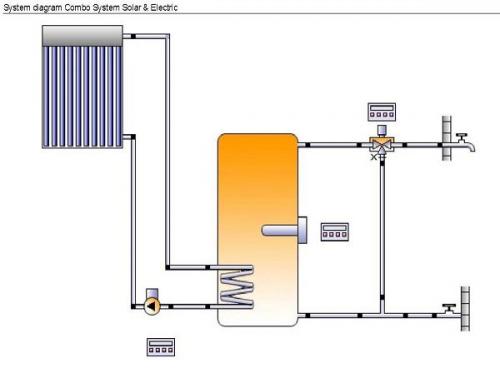Understanding Different Solar Vacuum Tubes
Solar collector is the most important aspect of any solar water heating system. However, solar vacuum tubes
play an integral part in solar power production; but were more
expensive than other flat panel counterparts. With the increasing demand
of solar energy and modern manufacturing technologies, the solar vacuum
tubes offer the greatest return on investment than other solar
collector systems.
Content –
The solar vacuum tubes are simple and easy to operate. A solar vacuum tube operates as per its design. They comprise of two glass layers along with vacuum in between the layers. Out of two layers, outer one is made from borosilicate glass that is low in iron and allows 98% light energy pass through. The secondary layer has special coatings.
Understanding Different Solar Vacuum Tubes –
Open Vacuum Tubes –
The
Non-pressurized solar heating systems use open vacuum tubes. Water
starts filling up the inner vacuum tube and is heated internally by the
sun. However, warm water is lighter than cold water and goes to the top
of the tub where it fills the solar collector.
The heavier cold water remains in the bottom of the vacuum tube by replacing the heated water and is again heated by the sun. This is a natural phenomenon and is known as thermo-siphoning. The main reason behind choosing non-pressurized heating system is that it doesn’t use any expensive copper piping, making the open tubes the most affordable.
The demerit is that the system can be ideal for open loop system, which is generally controlled by atmospheric pressure. You can use it for heating swimming pools as water flows directly into the vacuum tubes.
These
solar collectors should be used in applications above freezing and can
withstand small amount of pressure. They shouldn’t be used in pressure
systems available in closed loop like domestic hot water and space
heating.
Heat Pipe Vacuum Tubes –
The heat pipe vacuum tubes are considered as high performance tubes. Its principle is same like the open solar vacuum tubes;
but the water doesn’t enter the vacuum tube physically. Instead, the
hollow copper heating pipes that are specifically designed are inserted
to the vacuum tube.
Copper is an excellent thermo-conductor and conducts heat efficiently. The inside part of the heat pipe has pure water residing within vacuum. Vacuum means the water will boil at less than 30 degrees temperature.
Quickly, hot vapor goes to the top of a condenser bulb. After that, they will transfer heat to the heat sink that is connected to it. The condenser bulbs are specifically designed to reach temperature around 200 degrees Celsius and more.
The higher temperature helps the system to translate higher efficiencies. Using heat pipe vacuum tubes, the condenser bulbs are connected to a copper heat transfer manifold (heat sink). It can withstand up to 116 PSI pressure.
The water inside the heat pipe never enters the vacuum tubes. This means, it can be used in cold climate conditions. If a vacuum tube gets broken, the system would continue to work. The heat pipe solar vacuum tubes can be used in hot water tanks, radiators and in floor heating purposes.
The copper solar collector holds a small amount of liquid and can be used with any heat exchanger that utilizes glycol solution to prevent freezing.
Bottom Line –
These
are two different types of solar vacuum tubes. So you should make a
selection of right vacuum tubes based on your priorities and
preferences. Therefore, you should ask your solar installer about the
vacuum tubes and get a better understanding about them.
Author Information –
This article is written by Solar Tubs,
specializes in providing SunRain solar vacuum tubes, which use patented
three-layer process that results in a coating to absorb more solar
energy and withstand temperature around 300 degrees or 575F without
deteriorating.



Comments